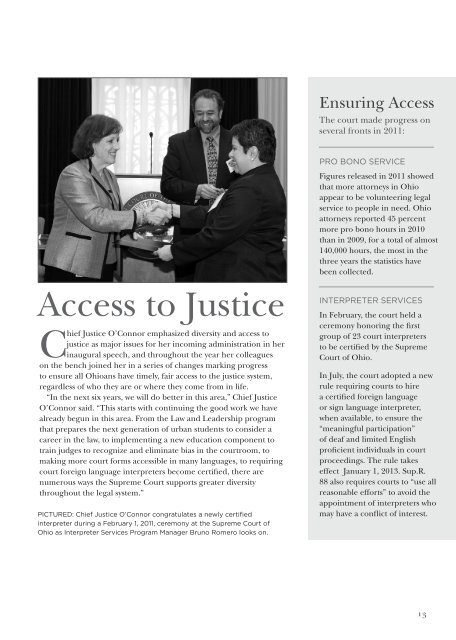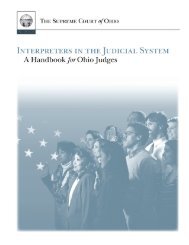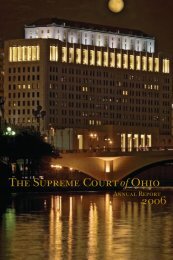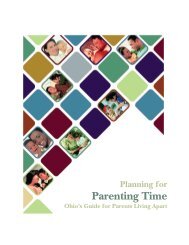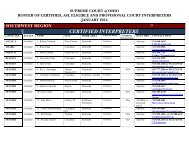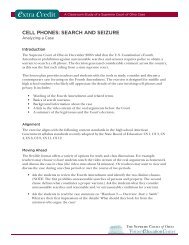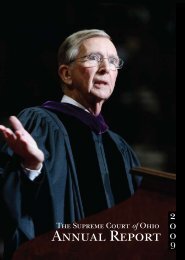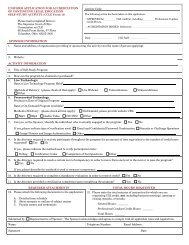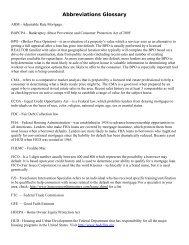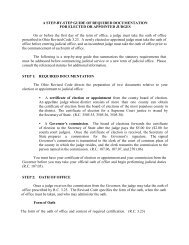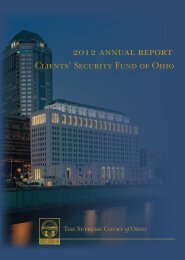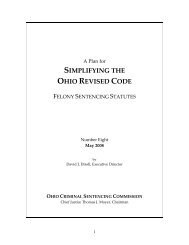Supreme Court of Ohio 2011 Annual Report
Supreme Court of Ohio 2011 Annual Report
Supreme Court of Ohio 2011 Annual Report
Create successful ePaper yourself
Turn your PDF publications into a flip-book with our unique Google optimized e-Paper software.
Ensuring Access<br />
The court made progress on<br />
several fronts in <strong>2011</strong>:<br />
PRO BONO SERVICE<br />
Figures released in <strong>2011</strong> showed<br />
that more attorneys in <strong>Ohio</strong><br />
appear to be volunteering legal<br />
service to people in need. <strong>Ohio</strong><br />
attorneys reported 45 percent<br />
more pro bono hours in 2010<br />
than in 2009, for a total <strong>of</strong> almost<br />
140,000 hours, the most in the<br />
three years the statistics have<br />
been collected.<br />
Access to Justice<br />
Chief Justice O’Connor emphasized diversity and access to<br />
justice as major issues for her incoming administration in her<br />
inaugural speech, and throughout the year her colleagues<br />
on the bench joined her in a series <strong>of</strong> changes marking progress<br />
to ensure all <strong>Ohio</strong>ans have timely, fair access to the justice system,<br />
regardless <strong>of</strong> who they are or where they come from in life.<br />
“In the next six years, we will do better in this area,” Chief Justice<br />
O’Connor said. “This starts with continuing the good work we have<br />
already begun in this area. From the Law and Leadership program<br />
that prepares the next generation <strong>of</strong> urban students to consider a<br />
career in the law, to implementing a new education component to<br />
train judges to recognize and eliminate bias in the courtroom, to<br />
making more court forms accessible in many languages, to requiring<br />
court foreign language interpreters become certified, there are<br />
numerous ways the <strong>Supreme</strong> <strong>Court</strong> supports greater diversity<br />
throughout the legal system.”<br />
PICTURED: Chief Justice O’Connor congratulates a newly certified<br />
interpreter during a February 1, <strong>2011</strong>, ceremony at the <strong>Supreme</strong> <strong>Court</strong> <strong>of</strong><br />
<strong>Ohio</strong> as Interpreter Services Program Manager Bruno Romero looks on.<br />
INTERPRETER SERVICES<br />
In February, the court held a<br />
ceremony honoring the first<br />
group <strong>of</strong> 23 court interpreters<br />
to be certified by the <strong>Supreme</strong><br />
<strong>Court</strong> <strong>of</strong> <strong>Ohio</strong>.<br />
In July, the court adopted a new<br />
rule requiring courts to hire<br />
a certified foreign language<br />
or sign language interpreter,<br />
when available, to ensure the<br />
“meaningful participation”<br />
<strong>of</strong> deaf and limited English<br />
pr<strong>of</strong>icient individuals in court<br />
proceedings. The rule takes<br />
effect January 1, 2013. Sup.R.<br />
88 also requires courts to “use all<br />
reasonable efforts” to avoid the<br />
appointment <strong>of</strong> interpreters who<br />
may have a conflict <strong>of</strong> interest.<br />
13


